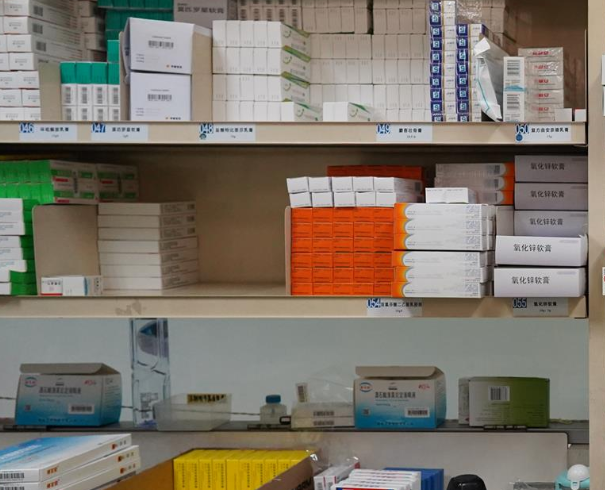
[ad_1]
The Essential Medicines List and WHO's list of essential diagnostic products are key guidance documents that help countries prioritize essential health products that should be widely available and affordable in all health systems.
Both lists focus on cancer and other global health issues, focusing on effective solutions, smart prioritization and optimal access for patients.
The updated list of essential medicines adds 28 medicines for adults and 23 for children and specifies new uses for 26 products already listed, for a total of 460 medicines considered essential to meet the main public health needs. Although this figure may seem high, it represents a fraction of the number of drugs available on the market. In targeting its choices, WHO focuses on patient benefits and cost-effective spending to help countries prioritize and achieve universal health coverage.
The updated list of essential diagnoses contains 46 general tests that can be used for routine patient care as well as the detection and diagnosis of a wide range of diseases, as well as 69 tests for detection, diagnosis and monitoring specific diseases.
The list of essential medicines (2019)
Treatments against cancer: Although several new cancer treatments have been commercialized in recent years, only a few have sufficient therapeutic benefits to be considered essential. The five cancer treatments added by the WHO to the new list of drugs are considered the best in terms of survival rates for treating melanoma, lung, blood and prostate cancers.
For example, two recently developed immunotherapies (nivolumab and pembrolizumab) have shown survival rates of up to 50% for advanced melanoma, an incurable cancer until recently. .
antibiotics: The Essential Medicines Committee has strengthened its advice on the use of antibiotics by updating the AWARE categories, which indicate which antibiotics to use for the most common and serious infections, in order to achieve better results therapeutically and reduce the risk of antimicrobial resistance. The committee recommended that three new antibiotics for the treatment of multidrug-resistant infections be considered essential.
Other updates to the list of medications include:
- New oral anticoagulants to prevent strokes as an alternative to warfarin for atrial fibrillation and the treatment of deep vein thrombosis. These are particularly advantageous for low-income countries because, unlike warfarin, they do not require regular monitoring;
- Biologics and their respective biosimilars for chronic inflammatory conditions such as rheumatoid arthritis and inflammatory bowel diseases;
- Thermostable carbetocin for the prevention of postpartum haemorrhage. This new formulation has effects similar to oxytocin, the current standard treatment, but offers benefits for tropical countries because it does not require refrigeration;
All submissions to the MEA Committee are not included in the list. For example, multiple sclerosis medications available at inclusion were not listed. The Committee noted that some relevant therapeutic options currently marketed in many countries were not included in the submissions; a revised application with all relevant available options will be welcome. The EML Committee also did not recommend the inclusion of methylphenidate, a drug for Attention Deficit Hyperactivity Disorder (ADHD), as it found uncertainties in the treatment of ADHD. Estimate of profits.
The list of essential diagnoses (in vitro)
The first list of essential diagnoses was published in 2018 and focuses on a limited number of priority diseases – HIV, malaria, tuberculosis and hepatitis. This year's list has expanded to include more noncommunicable and communicable diseases.
cancers: Given the critical importance of early cancer diagnosis (70% of cancer deaths occur in low- and middle-income countries largely because most patients are diagnosed too late), WHO added 12 tests to the diagnostic list to detect a wide range of diseases. solid tumors such as colorectal, hepatic, cervical, prostate, bad and germ cell cancers, as well as leukemia and lymphoma. To facilitate the diagnosis of cancer, a new section covering anatomical pathology tests has been added. this service must be made available in specialized laboratories.
Infectious diseasesThe list focuses on other infectious diseases prevalent in low- and middle-income countries such as cholera and neglected diseases such as leishmaniasis, schistosomiasis, dengue and zika.
In addition, a new section on influenza testing has been added for community health facilities where no laboratory is available.
General test: The list has also been expanded to include other general tests on various diseases and conditions, such as iron tests (for anemia), and tests to diagnose thyroid dysfunction and sickle cell disease (a form of hereditary anemia very present in the subregions). Saharan Africa).
Another notable update is a new specific section for testing for donated blood. This is part of a WHO-wide strategy to make blood transfusions safer.
"The list of essential diagnostic products was introduced in 2018 to guide test supply and improve treatment outcomes," said Mariângela Simão, deputy director general of drugs and health products of the world. ; WHO. "As countries move toward universal health coverage and drugs become more available, it will be critical to have the appropriate diagnostic tools in place to ensure appropriate treatment."
[ad_2]
Source link